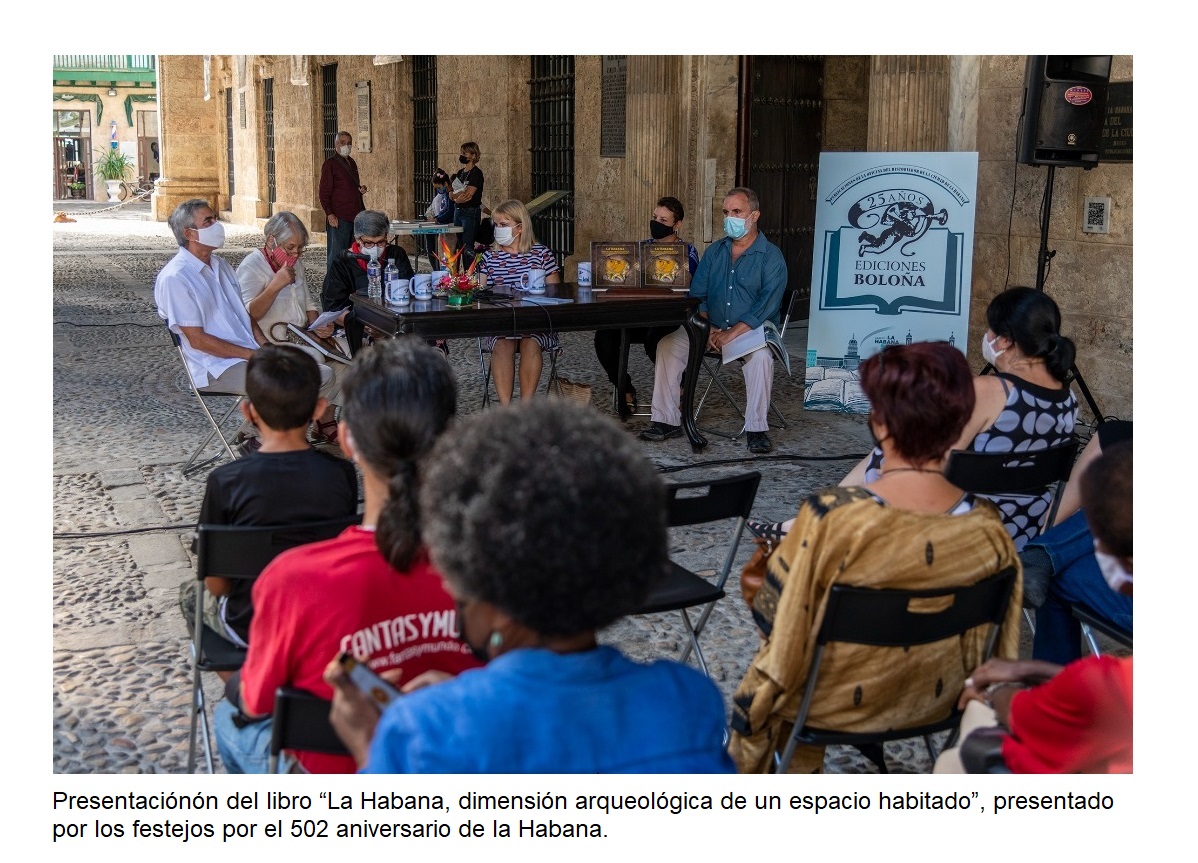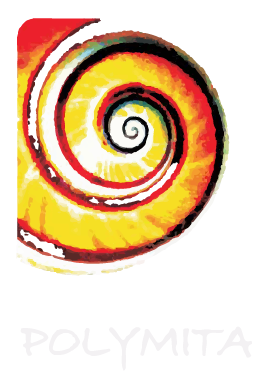

ARTICLE
ARCHAEOLOGICAL DIMENSION OF HAVANA
BY: RAFAEL ACOSTA DE ARRIBA
Recently, on the occasion of the 502nd anniversaries of the city and 25th of Ediciones Boloña, the volume "La Habana, Dimensión arqueológica de un espacio habitado" (2020) was presented. , a co-edition of Ediciones Boloña and Ediciones Polymita, with the coordination of Roger Arrazcaeta Delgado, director of the Cabinet of Archeology of the Office of the Historian of the City.
It is a beautiful book, art book size, with an elegant design by Jorge Méndez, and a remarkable level of printing and binding by Egondi Artes Gráficas, from Spain. The edition was in charge of the experienced Silvana Garriga, one of the most recognized Cuban publishers, winner of the National Edition Award, and the editorial direction bears the signature of Julio A. Larramendi, a photographer of a remarkable work and with a production of books that makes time deserves greater recognition. This team has given us a beautiful copy where you can appreciate both the excellence of the volume and the quality of the texts contained in it.
With a foreword by historian Alicia García Santana, a member of the Cuban Academy of History, the book is dedicated to Eusebio Leal Spengler, Historian of the City, and the greatest promoter of archaeological and cultural work in Old Havana. It opens with a fragment of one of his speeches in the documentary made by Luis Alberto García, as well as with fragments of the presentation that Eusebio made to the magazine Gabinete de Arqueología no. 12., in August 2018. These are words of recognition from Loyal to archaeologists, to archaeologists in a special way and to the value of that publication, which he considered “a defense of archeology”. Now the book becomes an acknowledgment in reverse.
García Santana's prologue is the text of a connoisseur on the subject; She lists the different contents of the book and places the points on the i's in terms of weighing its theoretical and academic content. This is what he says: “The text that the reader has in his hands comes to compensate, as far as Old Havana is concerned, that void, as it brings to light the sustained work of investigations carried out by the Archaeological Cabinet of the Office of the Historian of the City of Havana on one of the most important historical-archaeological sites in the country, if not the most: the seat of the town of San Cristóbal de La Habana ”. With these words, the prologue introduces us to the subsequent reading and thanks herself for that panoramic view of the book, of her essays and studies, 248 pages of specialized knowledge, with first-rate graphics.
The compiled specialists address different issues related to the institutional work of the Office of the City Historian in excavations and archaeological investigations in an inhabited space, among them: the delimitations for the study of the southern and northern areas of the city, "a an enigma of more than 500 years ”, according to its author Roger Arrazcaeta; the origin and development of the town turned into a city; the indigenous material legacy found in the capital's subsoil; the bay of Havana as a specific object of study; the historiography of commerce, production and consumption in the city, and the different participations in archaeological investigations that contribute to the narrative of city and nation.
The book also has a Glossary of specialized terms (an effective help for the not too informed reader), a General Bibliography, which is much appreciated and, finally, the curricular files of the authors, true specialists in the field: Marcos Antonio Acosta Mauri, César Alonso Sansón, Carlos Albero Hernández Oliva, Osvaldo Martínez Vázquez, Karen Mahé Lugo Romera, Sonia Menéndez Castro, Rosalía Oliva Suárez, Rebecca Ortiz Linsuaín, Beatriz A, Rodríguez Basulto, LisetteRoura Álvarez and the aforementioned Alicia García and Roger Arrazcaeta.
The graphic support of the texts is simply remarkable, it is a book that can be read with retinal pleasure, in addition to the fundamental pleasure of knowledge that it brings us. Visually speaking, cover, back cover, end caps, photos and illustrations are a beautiful design object, a book to collect after being read as it deserves.
In 2018 Ediciones Polymita had presented Cuba: archeology and historical legacy, another extraordinary text on the same subject, also with the editorial direction of Julio A. Larramendi and with the advice, as scientific editor, of the renowned professor at the University of Havana, Armando Rangel Rivero. This discipline of Cuban social sciences is not one of the most editorially privileged and the appearance of any book on it must always be highlighted.
If in that book the archeology of the pre-Columbian aboriginal legacy has the greatest accent, the new installment of Polymita y Boloña emphasizes the investigations of the visible remains of the old town of San Cristóbal de La Habana, the genesis of the city that proliferated over the centuries. subsequent and current capital of Cuba. Thus, it is a relevant contribution to the dissemination of a scientific discipline that is generally silenced or with little literature in its favor.
It is also a tribute to the work of dozens of archaeologists and researchers, of hundreds of people who, over the decades, have examined the soils, buildings and different areas of the city and its bay, in search of the remains of information that may be in them. In that sense, it is a tribute to the intense and arduous investigative work of the Cabinet of Archeology of the Office of the Historian of the City of Havana, its workers and managers, true scientists.
It is a beautiful book, art book size, with an elegant design by Jorge Méndez, and a remarkable level of printing and binding by Egondi Artes Gráficas, from Spain. The edition was in charge of the experienced Silvana Garriga, one of the most recognized Cuban publishers, winner of the National Edition Award, and the editorial direction bears the signature of Julio A. Larramendi, a photographer of a remarkable work and with a production of books that makes time deserves greater recognition. This team has given us a beautiful copy where you can appreciate both the excellence of the volume and the quality of the texts contained in it.
With a foreword by historian Alicia García Santana, a member of the Cuban Academy of History, the book is dedicated to Eusebio Leal Spengler, Historian of the City, and the greatest promoter of archaeological and cultural work in Old Havana. It opens with a fragment of one of his speeches in the documentary made by Luis Alberto García, as well as with fragments of the presentation that Eusebio made to the magazine Gabinete de Arqueología no. 12., in August 2018. These are words of recognition from Loyal to archaeologists, to archaeologists in a special way and to the value of that publication, which he considered “a defense of archeology”. Now the book becomes an acknowledgment in reverse.
García Santana's prologue is the text of a connoisseur on the subject; She lists the different contents of the book and places the points on the i's in terms of weighing its theoretical and academic content. This is what he says: “The text that the reader has in his hands comes to compensate, as far as Old Havana is concerned, that void, as it brings to light the sustained work of investigations carried out by the Archaeological Cabinet of the Office of the Historian of the City of Havana on one of the most important historical-archaeological sites in the country, if not the most: the seat of the town of San Cristóbal de La Habana ”. With these words, the prologue introduces us to the subsequent reading and thanks herself for that panoramic view of the book, of her essays and studies, 248 pages of specialized knowledge, with first-rate graphics.
The compiled specialists address different issues related to the institutional work of the Office of the City Historian in excavations and archaeological investigations in an inhabited space, among them: the delimitations for the study of the southern and northern areas of the city, "a an enigma of more than 500 years ”, according to its author Roger Arrazcaeta; the origin and development of the town turned into a city; the indigenous material legacy found in the capital's subsoil; the bay of Havana as a specific object of study; the historiography of commerce, production and consumption in the city, and the different participations in archaeological investigations that contribute to the narrative of city and nation.
The book also has a Glossary of specialized terms (an effective help for the not too informed reader), a General Bibliography, which is much appreciated and, finally, the curricular files of the authors, true specialists in the field: Marcos Antonio Acosta Mauri, César Alonso Sansón, Carlos Albero Hernández Oliva, Osvaldo Martínez Vázquez, Karen Mahé Lugo Romera, Sonia Menéndez Castro, Rosalía Oliva Suárez, Rebecca Ortiz Linsuaín, Beatriz A, Rodríguez Basulto, LisetteRoura Álvarez and the aforementioned Alicia García and Roger Arrazcaeta.
The graphic support of the texts is simply remarkable, it is a book that can be read with retinal pleasure, in addition to the fundamental pleasure of knowledge that it brings us. Visually speaking, cover, back cover, end caps, photos and illustrations are a beautiful design object, a book to collect after being read as it deserves.
In 2018 Ediciones Polymita had presented Cuba: archeology and historical legacy, another extraordinary text on the same subject, also with the editorial direction of Julio A. Larramendi and with the advice, as scientific editor, of the renowned professor at the University of Havana, Armando Rangel Rivero. This discipline of Cuban social sciences is not one of the most editorially privileged and the appearance of any book on it must always be highlighted.
If in that book the archeology of the pre-Columbian aboriginal legacy has the greatest accent, the new installment of Polymita y Boloña emphasizes the investigations of the visible remains of the old town of San Cristóbal de La Habana, the genesis of the city that proliferated over the centuries. subsequent and current capital of Cuba. Thus, it is a relevant contribution to the dissemination of a scientific discipline that is generally silenced or with little literature in its favor.
It is also a tribute to the work of dozens of archaeologists and researchers, of hundreds of people who, over the decades, have examined the soils, buildings and different areas of the city and its bay, in search of the remains of information that may be in them. In that sense, it is a tribute to the intense and arduous investigative work of the Cabinet of Archeology of the Office of the Historian of the City of Havana, its workers and managers, true scientists.



